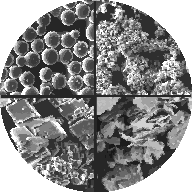Fluid flow in porous media - Chapter 3
Permeability calculator
Online permeability calculator where you can input values of Sauter mean diameter
for a porous medium and an extimate of the solids concentration by volume fraction and the calculator will
provide the permeability of the porous media from two separate models for permeability:
using the Kozeny-Carman approach, with a Kozeny constant of 5, and
using the Happel and Brenner approach, which is based on a solution to the Navier-Stokes equation.
More information on these two separate approaches is given in the accompanying video on fluid flow.
Fluid flow through porous media
The video below explains the modelling of porous media (Darcy's Law) and the permeability models:
Answers to problems at the end of Chapter 3:
Q1
(i): correct answer is (b)
(ii): correct answer is (c)
(iii): correct answer is (a)
(iv): correct answer is (c)
(v): correct answer is (c)
(vi): correct answer is (c)
(vii): The Kozeny-Carman equation is valid because The Modified Reynolds
number is less than 2 - see the equation summary on page 27.
Q2
(i): correct answer is (a)
(ii): correct answer is (a)
(iii): No, The Modified Reynolds Number is greater than 2; so, there
is a degree of turbulence within the bed that is too significant to use
a laminar flow equation and expect it to provide a reasonable estimate
of the pressure drop.
(iv): correct answer is (b) - i.e. the superficial velocity over the porosity,
see equation (3.1)
(v): correct answer is (a)
(vi): correct answer is (b)
(vii): The Kozeny-Carman equation provides pressure drop due to viscous flow of
fluid over the particles within the bed - you still have this effect BUT there is
an additional energy loss (i.e. pressure drop) due to eddies and turbulence
within the bed. So, the real pressure drop will be higher than provided by
the Kozeny-Carman equation.
(viii): correct answer is (a) - coming from pressure is depth x density x g. This
will be the pressure needed to raise the fluid to the top of the column, the pressure
drop calculation is the dynamic pressure drop due to friction as the fluid flows. You
will need to add the two pressures together. In this case the static pressure is
negligible - it isn't always!
FAQ

